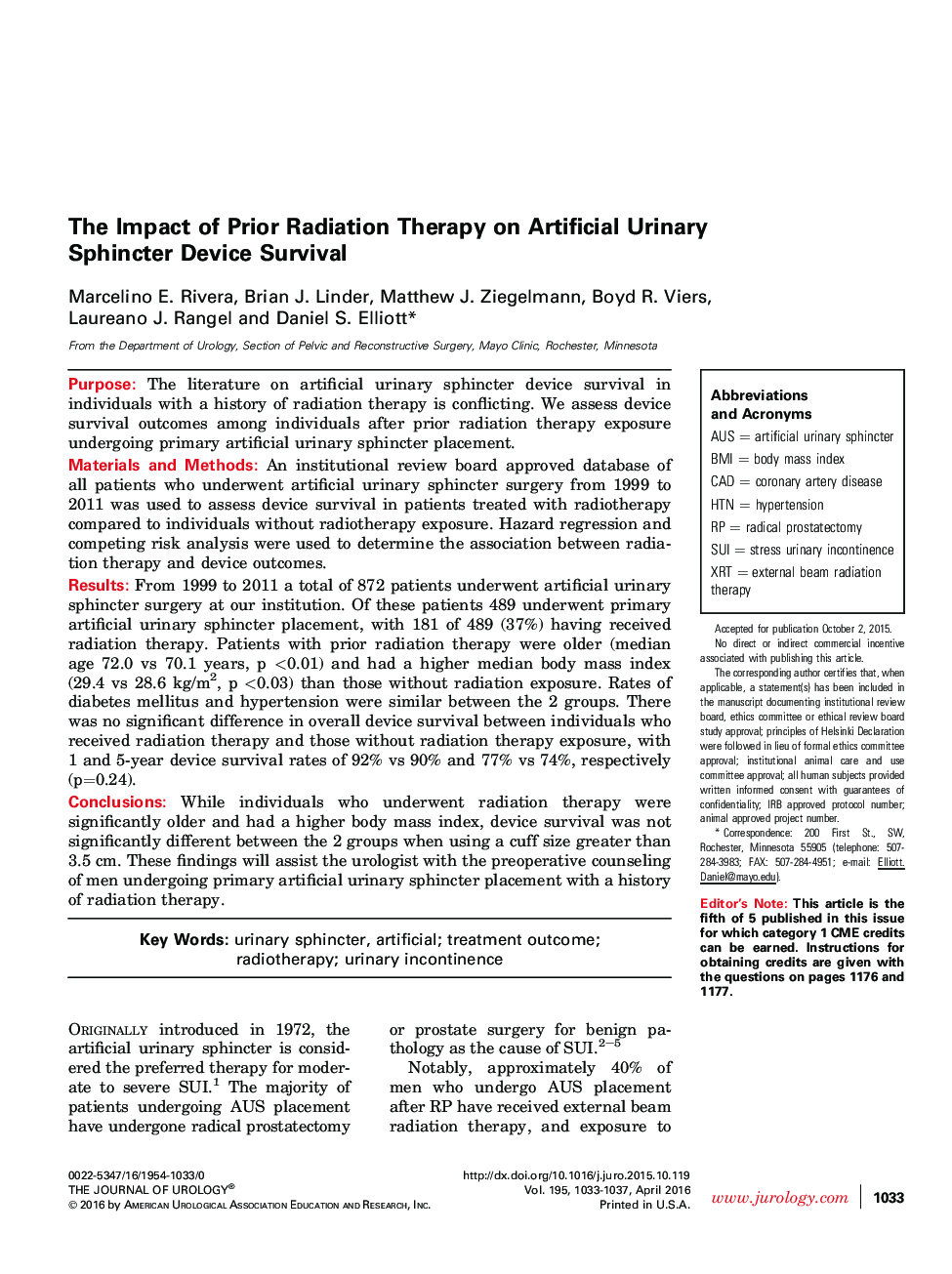| کد مقاله | کد نشریه | سال انتشار | مقاله انگلیسی | نسخه تمام متن |
|---|---|---|---|---|
| 3858567 | 1598878 | 2016 | 5 صفحه PDF | دانلود رایگان |
PurposeThe literature on artificial urinary sphincter device survival in individuals with a history of radiation therapy is conflicting. We assess device survival outcomes among individuals after prior radiation therapy exposure undergoing primary artificial urinary sphincter placement.Materials and MethodsAn institutional review board approved database of all patients who underwent artificial urinary sphincter surgery from 1999 to 2011 was used to assess device survival in patients treated with radiotherapy compared to individuals without radiotherapy exposure. Hazard regression and competing risk analysis were used to determine the association between radiation therapy and device outcomes.ResultsFrom 1999 to 2011 a total of 872 patients underwent artificial urinary sphincter surgery at our institution. Of these patients 489 underwent primary artificial urinary sphincter placement, with 181 of 489 (37%) having received radiation therapy. Patients with prior radiation therapy were older (median age 72.0 vs 70.1 years, p <0.01) and had a higher median body mass index (29.4 vs 28.6 kg/m2, p <0.03) than those without radiation exposure. Rates of diabetes mellitus and hypertension were similar between the 2 groups. There was no significant difference in overall device survival between individuals who received radiation therapy and those without radiation therapy exposure, with 1 and 5-year device survival rates of 92% vs 90% and 77% vs 74%, respectively (p=0.24).ConclusionsWhile individuals who underwent radiation therapy were significantly older and had a higher body mass index, device survival was not significantly different between the 2 groups when using a cuff size greater than 3.5 cm. These findings will assist the urologist with the preoperative counseling of men undergoing primary artificial urinary sphincter placement with a history of radiation therapy.
Journal: The Journal of Urology - Volume 195, Issue 4, Part 1, April 2016, Pages 1033–1037
